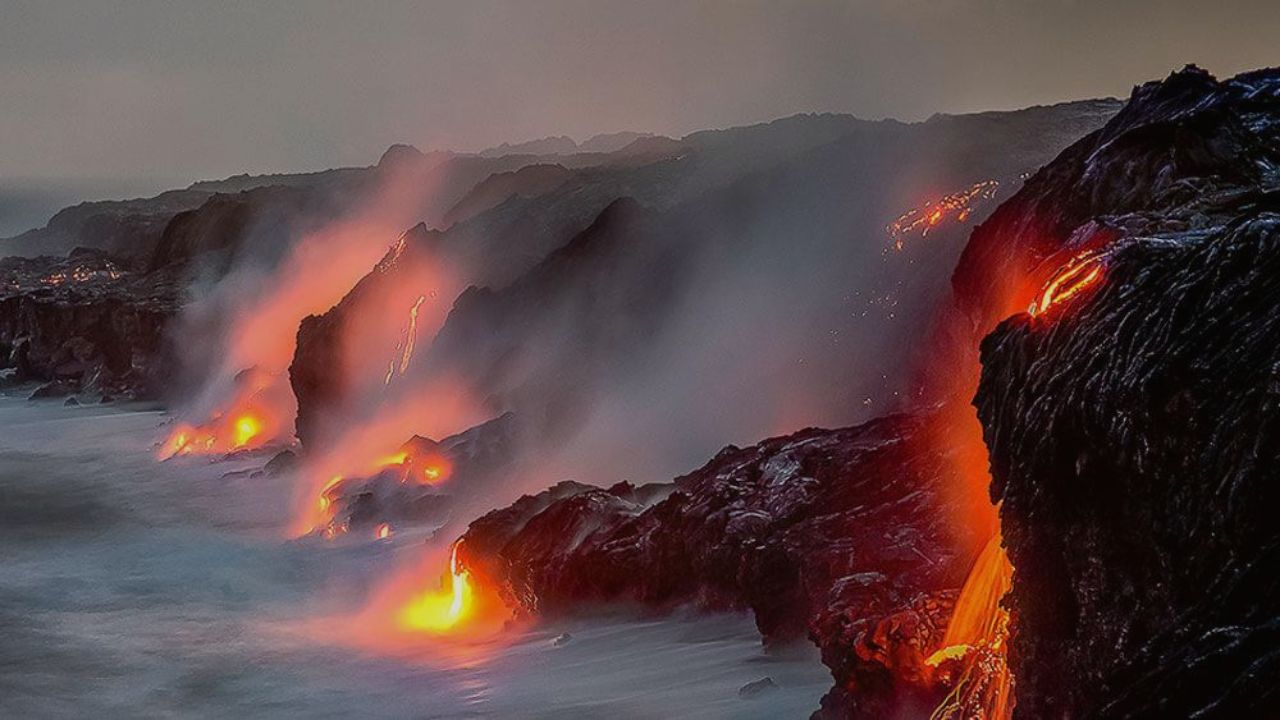When it comes to breathtaking scenery and natural wonders, Hawaii stands as one of America’s crown jewels. But beneath its paradise-like image lies a deadly side that has earned it a spot among the most dangerous tourist attractions in the United States.
The island’s active volcanoes, rugged coastlines, and unpredictable weather make it both a dream destination and a high-risk adventure for the unprepared.
Fascination Meets Risk: Hawaii’s Volcanic Sites
The Hawai’i Volcanoes National Park on the Big Island is home to two of the world’s most famous volcanoes — Kīlauea and Mauna Loa. These active giants attract thousands of visitors hoping to witness lava flows up close.
However, with lava temperatures reaching 2,200°F, the danger is extreme. Toxic sulfur dioxide fumes, sudden eruptions, and unstable ground collapses have claimed numerous lives and injured many over the years. Standing too close is not just risky — it can be fatal.
The Perils of Volcano Watching
Many visitors underestimate how quickly conditions can change. Sudden lava breakouts can occur without warning, sending molten rock and superheated gases toward unsuspecting onlookers. Even designated viewing areas can become unsafe in minutes.
Helicopter tours offer an exhilarating bird’s-eye view, but the region’s history includes multiple crashes, sometimes with tragic outcomes. The risk isn’t just from mechanical failure — shifting winds and volcanic ash clouds can make flying treacherous.
For example, The Wrangler highlights that between 1992 and 2002, over 40 deaths occurred in volcanic areas due to falls, exposure, and natural hazards — proof that these landscapes are as dangerous as they are beautiful.
Hiking Trails in a Landscape of Extremes
The volcanic terrain offers miles of trails with panoramic views unlike anywhere else. But hikers face hidden fissures, loose rock, and sudden weather changes. Heavy rain can make trails slippery in seconds, and heat from the sun combined with volcanic steam can lead to dehydration and heatstroke.
Those who venture off marked trails put themselves at even greater risk — not only of injury but of rescue operations that are often delayed due to rough terrain and hazardous conditions.
Ocean Risks: Hawaii’s Double Threat
Hawaii’s dangers don’t end on land. Its beautiful but unforgiving coastline is responsible for many emergency rescues every year. Sandy Beach on Oahu is infamous for powerful shore breaks that cause broken bones, spinal injuries, and drownings. Strong rip currents can sweep even experienced swimmers far from shore in seconds.
Cliff jumping, snorkeling in unfamiliar waters, and swimming in areas without lifeguards only increase the likelihood of tragedy. Locals often warn visitors: “If in doubt, don’t go out.”
Read Also: Mississippi’s Natchez Under-the-Hill Named One of America’s Most Dangerous Tourist Spots
Safety Amidst the Spectacle
Hawaii rewards those who prepare. To enjoy its natural wonders safely, visitors should:
- Follow all safety signs and avoid restricted areas near volcanoes.
- Use certified guides for hiking and lava viewing.
- Check eruption and weather alerts before setting out.
- Swim only where lifeguards are present and respect posted warnings.
- Choose reputable helicopter operators with proven safety records.
Nature’s Beauty, Nature’s Warning
Hawaii offers an intoxicating blend of thrill and risk. From photographing fiery lava flows to surfing powerful waves, every adventure comes with an unspoken warning: here, beauty and danger go hand in hand.
For those who respect the elements, the islands can provide memories that last a lifetime. For those who ignore the risks, paradise can turn perilous in an instant — making Hawaii one of the most dangerous tourist destinations in America.
What about you? Have you experienced Hawaii’s wild side, or do you have safety tips for fellow travelers? Share your thoughts in the comments below, and explore more travel safety stories at ibwhsmag.com.


 by
by 

